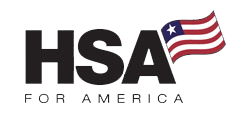In today’s competitive job market, small employers often find themselves in a tough spot when it comes to attracting and retaining top talent. One effective way to stand out is by offering a comprehensive and unique benefits package. Here are the 10 best employee benefits that small employers can offer, along with their advantages.

10 Best Employee Benefits
1. Health Insurance
Health insurance remains a top priority for employees. For small employers, providing health insurance can significantly enhance the appeal of their benefits package.
It not only helps in attracting quality candidates but also in retaining top talent.
Good health benefits consistently rank at the top of lists of the most in-demand employee benefits.
That said, offering a full-fledged traditional group health insurance plan is not always affordable for small businesses. According to data from the Kaiser Family Foundation, the 2023 average cost of providing an employer-sponsored health plan for a family of four was $23,968.
If you’re a small employer and you believe you’ve been priced out of the group health insurance market, there are more affordable but powerful options out there – some of which are discussed below.
2. Health Sharing Plans
Health sharing plans are cooperative arrangements where members bypass for-profit insurance companies and share healthcare costs among themselves.
They aren’t insurance companies. Instead, they are a viable non-profit alternative to traditional insurance carriers.
For small businesses, these plans can be a cost-effective alternative to traditional health insurance.
First, even the most robust health sharing plans are available at around half the monthly cost of a traditional group health insurance policy.
They can be tailored to include dependents as well as the workers themselves.
And they typically provide much more freedom for plan members to choose their own doctors compared to the HMOs and PPOs that dominate the employee group health insurance market.
They typically work best for members who are in generally good health with fewer pre-existing conditions. This is because health sharing plans typically have waiting periods.
For help designing a quality benefits package for a diverse workforce – including both health insurance, health sharing, and other innovative solutions, contact a Personal Benefits Manager for a free analysis and consultation.
3. Direct Primary Care
Direct Primary Care (DPC) offers employees access to primary care services for a flat, monthly fee, without the complexities of traditional insurance.
This is critical, because many lower- and middle-income employees skip going to the doctor because of high deductibles, copays, and other out-of-pocket costs – even when they have insurance.
But when workers skip needed healthcare due to costs, they wind up creating much bigger and more expensive problems down the road.
Direct primary care solves this problem by eliminating the cost barrier that prevents workers from seeing their primary care, family doctors, and pediatricians.
For a flat, predictable monthly fee, workers can see their primary care doctor as often as they need, usually either in person or online or over the phone.
Employees appreciate the ease of access to healthcare and the focus on preventive care, which can reduce long-term health issues.
For employers, DPC can mean lower healthcare costs and healthier employees. It also means much higher employee retention rates and lower turnover.
Compare Pricing on the Best Insurance Plans Available
4. Disability Insurance
The loss of income due to illness or injury is perhaps the most devastating economic risk that employees and their families face.
About one out of 20 of today’s workers will become disabled before they retire. But less than 5% of these disabilities will be covered under worker’s compensation insurance, according to the Council for Disability Awareness.
Social Security only provides a basic, poverty-level subsistence income, and only for the most severely disabled individuals.
This is why it’s critical for employers to step in and offer access to disability insurance, or to encourage workers to purchase their own.
Disability insurance steps in to replace up to 50% to 65% of a worker’s pre-disability income in the event he or she is unable to work due to a disabling injury or illness.
This benefit is particularly valued by employees and can be a key factor in their decision to join or stay with a company.
As an employer, you can offer access to this crucial benefit. You can help pay premiums directly. Or more commonly, you can offer disability insurance as a voluntary benefit, and have employees pay premiums via payroll deduction.
In this way, you can offer a vital, in-demand employee benefit at little or no cost to your bottom line.
To set up a disability insurance benefit for your employees, contact a Personal Benefits Manager.
5. Health Reimbursement Arrangements (HRAs)
HRAs allow employers to reimburse employees for medical expenses and insurance premiums.
This benefit is flexible and can be tailored to the specific needs of the business and its employees.
For small employers, HRAs offer a way to provide workers with valuable health benefits without the high costs associated with traditional health insurance plans.
Click here to learn more about setting up an HRA for your business.
6. Health Savings Accounts (HSAs)
Employers can set up health savings accounts for employees. Either you or your employees can contribute pre-tax money to the employee’s HSA – saving on income tax as well as payroll taxes.
Health Savings Accounts (HSAs) offer a unique triple tax advantage, making them an attractive option for individuals with high-deductible health plans. Here’s a brief overview of these tax benefits:
- Tax-Deductible Contributions. Contributions made to an HSA are tax-deductible. This means that the money you put into your HSA can be deducted from your gross income, reducing your taxable income for the year. This deduction applies whether you itemize deductions on your tax return or not.
- Tax-Free Growth. The funds in an HSA grow tax-free. Any interest, dividends, or capital gains earned from the assets in your HSA account do not incur taxes as long as they remain in the account. This allows the savings in your HSA to potentially grow more quickly than in a taxable account.
- Tax-Free Withdrawals for Qualified Medical Expenses. Withdrawals from an HSA are tax-free when used for qualified medical expenses. This includes a wide range of health-related costs, such as doctor’s visits, prescription medications, dental care, and vision care.
Using HSA funds for these expenses does not incur any taxes, making it a very efficient way to pay for healthcare costs.
These triple tax benefits make HSAs a powerful tool for healthcare savings and financial planning, especially for those with high-deductible health plans.
HSAs are a win-win for both employers and employees.
Note: To be eligible for HSA contributions, the employee must be covered under a qualified high-deductible health plan (HDHP).
They offer tax advantages and allow employees to save and pay for medical expenses tax free.
Tip: As an employer, you can offer access to HSAs through a Section 125 cafeteria plan, which reduces the overall payroll taxes that an employer must pay. This is because employee contributions to the HSA can be made on a pre-tax basis, reducing their taxable income and, consequently, the employer’s payroll tax liabilities.
Click here to learn more about HSAs, and how to set one up for your employees.
7. Flexible Hours/Job Sharing
Flexible working hours and job sharing are increasingly popular benefits. These “lifestyle benefits” require little or no cash outlays from employers. But they allow employees to maintain a much better work-life balance.
This, in turn, leads to higher job satisfaction, retention rates, and productivity.
For small employers, offering such flexibility can be a key differentiator in attracting talent, especially among younger employees and parents.
According to some HR experts, the ability to work from anywhere – not just from home – is the number one most requested employee perk.
In fact, according to a recent report from Envoy, the ability to work remotely or to choose when to come to the office ranked up there with cash compensation benefits like higher 401(k) matches and paid time off.
8. Life Insurance
In past generations, people routinely bought life insurance from an agent over their kitchen table.
Today, families increasingly rely on employers even for basic life insurance coverage. When employers don’t step in, millions of workers and their families are left dangerously underinsured against the death of a family breadwinner – or completely uninsured altogether.
Obviously, this is a devastating risk for families to take. And a recent Forbes Advisor survey found that 45% of employees and 43% of employers named life insurance as one of their top in-demand employee benefits.
Employers can deduct the premiums for a death benefit of up to $50,000 in group life insurance coverage as an employee benefit. But this amount is grossly insufficient, by itself. It barely covers one year’s salary for most workers, if that.
That’s where life insurance as a voluntary benefit comes in: Working with quality life insurance carriers, employers can offer much more meaningful death benefits of $250,000, $400,000, or even more, depending on the carrier – at little or no cost to the company.
Employees sign up for the benefit, and then pay the premiums themselves via payroll deduction.
Want to learn more about life insurance as an employee benefit? Contact an HSA For America Personal Benefits Manager.
9. Pet Insurance
People are tremendously attached to their pets.
But with over half of employees living paycheck-to-paycheck, the prospect of a large vet bill can be incredibly stressful to workers. Preoccupied, stressed employees are less productive on the job, and can even become safety risks for employers.
That’s why more employers are offering pet insurance as part of their employee benefits package: 63% of pet owners say that they are more likely to stay with an employer who offers pet insurance as an employee benefit.
According to reporting from Benefits PRO:
- Employees with access to pet insurance are significantly more likely to recommend their employer to others (71%) than are those at companies without the benefit (56%).
- Additionally, those with pet insurance are more likely to say the amount of stress in their life is acceptable – 57% compared to just 44%.
- The same Forbes Advisor survey cited above found that more than 3 in 10 workers aged 18 to 41 listed pet insurance as among their top most-desired employee benefits.
Furthermore, like most voluntary benefits, your company can roll out a pet insurance benefit at little or no cost to you: Employees who want this benefit pay premiums via payroll deduction.
It’s very easy to set up, and it’s a much-appreciated benefit – especially for the millions of people who live paycheck to paycheck, and would be devastated by a high unexpected vet bill.
10. Tuition and Student Loan Repayment Assistance
With student loan debt being a significant concern for many workers, offering tuition or student loan repayment assistance can be a major draw.
This benefit not only helps employees financially but also encourages their professional development, leading to a more skilled and educated workforce.
As an employer, you can provide up to $5,250 per year per employee in direct tuition assistance tax-free to the employee. This expense is deductible as compensation.
You can also deduct direct student loan repayment assistance to employees. But unlike tuition assistance, any amounts you pay towards paying off employee student loans is taxable to the employee.
Student loan assistance is especially important to younger employees who have higher student loan balances. In many cases, their student loan payments choke out their household budgets and make it impossible for them to maximize even a generous 401(k) match.
This makes the company 401(k) or other defined contribution pension plan irrelevant to these younger workers, and therefore makes it of limited value in recruiting and retaining younger workers with high student loan burdens.
By offering student loan repayment assistance – for example, by matching student loan balance payments at the same level as they match 401(k) contributions – employers can make their overall benefits package more enticing to younger workers.
Think Outside the Box
If you’re a small employer and you believe you’ve been priced out of the traditional benefits markets, you can still offer meaningful benefits and powerful protections for your employees and their families at little or no cost to you.
You can accomplish this through employee-paid voluntary benefits and payroll deduction.
It’s very easy to set up, and you have a ton of flexibility in how you structure these benefits.
In addition to the hot, in-demand benefits listed above, additional options include:
- Critical Illness Insurance. Pays a large lump sum benefit in the event of a critical illness diagnosis that the patient can use for any purpose, such as covering a deductible, co-pays, travel costs, paying caregivers, or taking time off work.
- Accident and Hospital Insurance/Hospital Indemnity Insurance. Pays an immediate cash benefit in the event of an accident and/ or hospitalization. This can help cash-strapped workers cover a high insurance deductible or health sharing personal responsibility amount.
- Identity theft protection.
- Dental and vision insurance/discount plans.
Compare Pricing on the Best HealthShare Plans Available
Conclusion
For small employers, the key to a successful benefits package lies in understanding the needs and preferences of their workforce.
By offering a mix of traditional benefits like health insurance and innovative options like pet insurance and student loan repayment assistance,, small businesses can create an attractive workplace that stands out in the job market. These benefits not only aid in recruitment and retention but also contribute to a happier, healthier, and more productive workforce.
Ready to Enhance Your Benefits Package?
Don’t lose another valuable employee because your benefits package isn’t competitive with today’s market for talent! Learn more: Download our Complete Guide To Small Business Healthcare Plans.
Contact a Personal Benefits Manager today to explore how you can implement these competitive benefits in your business. Remember, the right benefits not only support your team but also strengthen your business’s position in the competitive marketplace.
For Further Reading: The Most Effective Healthcare Strategies for Small Businesses With Fewer Than 50 Employees | Why Smart Employers Are Dropping Group Health for ICHRAs and DPC | SICKER SHOCK: Employers Slammed by Biggest Health Insurance Premium Cost in Years | SHow to Design an Effective Employee Benefits Program




